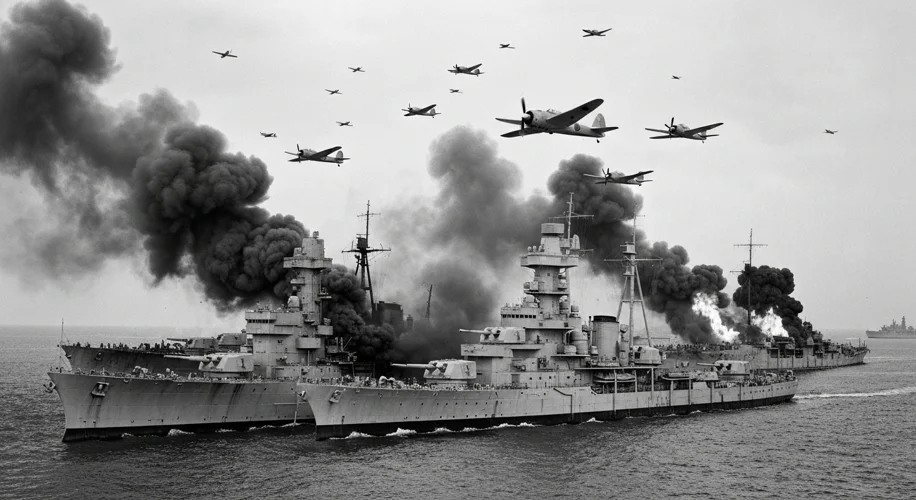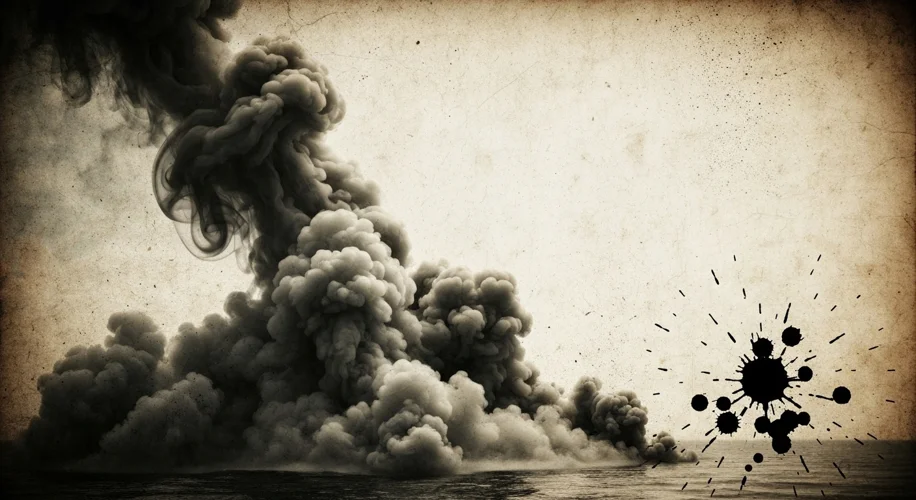The morning of December 7, 1941, dawned like any other for many Americans. Families enjoyed breakfast, soldiers went about their duties, and the nation, largely detached from the growing storm in Europe and Asia, clung to an enduring sense of peace. Then, the sky erupted. Japanese aircraft, in a devastating surprise attack, unleashed fury upon the U.S. naval base at Pearl Harbor, Hawaii. The roar of engines, the explosions, and the plumes of smoke etched a moment of profound shock and national trauma into history.
But in the wake of such a cataclysmic event, it is perhaps human nature to seek answers, to understand why. For some, the official narrative – a meticulously planned Japanese assault catching the United States unprepared – simply didn’t suffice. This unease sowed the seeds of conspiracy theories, suggesting a far more sinister truth: that the U.S. government, specifically President Franklin D. Roosevelt, knew the attack was coming and deliberately allowed it to happen.
The historical backdrop to this persistent theory is crucial. The 1930s and early 1940s were a period of intense isolationist sentiment in America. Many Americans felt that the nation had been drawn into the Great War (World War I) unnecessarily and were determined to avoid entanglement in another foreign conflict. President Roosevelt, however, recognized the growing threat posed by Nazi Germany and Imperial Japan. He saw the writing on the wall, understanding that America’s eventual involvement in World War II was likely inevitable. This tension between public opinion and the President’s evolving foreign policy analysis forms a key part of the fertile ground for conspiracy.
Proponents of the “Prior Knowledge” theory often point to a series of events and analyses that, when viewed through a conspiratorial lens, seem to suggest foreknowledge. One significant argument centers on America’s intelligence capabilities. The U.S. had broken Japanese diplomatic codes, including the crucial “Magic” intercepts. These intercepts reportedly provided glimpses into Japanese military planning and sentiment, with some believing they contained direct warnings about an impending attack on Pearl Harbor. Furthermore, the argument goes, why were the U.S. Pacific Fleet’s aircraft carriers conveniently absent from Pearl Harbor during the attack? They were at sea on a mission, a fact that some interpret as a deliberate move to protect them, thereby leaving the battleships as a sacrificial lamb.

Another line of reasoning involves the supposed “eight alerts” or warnings that American forces received in the days and hours leading up to the attack. These included reports of Japanese submarines near Hawaii and general warnings about increasing hostilities. Critics of the official narrative argue that these alerts were downplayed or ignored, which, if intentional, would point to a calculated decision to let the attack occur.
The alleged motive behind such a devastating act of complicity? To galvanize public opinion and force the United States into World War II. The attack on Pearl Harbor was the catalyst that shattered American isolationism overnight, uniting the nation behind a declaration of war. Conspiracy theorists posit that Roosevelt, unable to convince a reluctant Congress and public to enter the war, engineered the attack as a necessary evil to achieve a greater good – the defeat of fascism.
However, mainstream historical scholarship overwhelmingly refutes these claims. While the U.S. did possess intelligence on Japan’s general aggressive intentions and had broken codes, the specifics of the Pearl Harbor attack – the precise timing, the target, the scale – remained elusive. The “Magic” intercepts were fragmented and often cryptic, and the process of deciphering and interpreting them was complex and time-consuming, prone to errors and misjudgments. The idea that a specific, actionable warning was sitting on someone’s desk, ignored, is not supported by the bulk of evidence.

Regarding the absence of the aircraft carriers, historians explain that they were indeed on operational missions, a common occurrence during times of heightened tension. The focus of defense planning at the time was largely on potential land invasions or submarine attacks, not a large-scale carrier-based aerial assault on a fortified harbor. The military, while aware of the precarious situation, was not anticipating an attack of such magnitude or on that specific day.
Moreover, the logistical and political implications of orchestrating such a devastating event are staggering. It would have required the complicity of an enormous number of individuals across various branches of government and the military, with an immense risk of exposure. The human cost, the betrayal of thousands of American servicemen, makes such a conspiracy difficult to fathom for many historians. The sheer chaos and confusion on the ground during the attack, as documented by survivors and military records, further contradicts the idea of a carefully controlled deception.

Ultimately, the Pearl Harbor conspiracy theories, while persistent, remain on the fringes of historical consensus. They speak to a deep-seated human desire to find order and agency in chaos, to believe that even the most horrific events have a discernible, albeit malevolent, logic. Yet, the weight of evidence, the meticulous research by countless historians, points to a tragic confluence of diplomatic miscalculation, intelligence failures, and an audacious enemy strategy. The echoes of December 7, 1941, remind us not of a government conspiracy, but of the devastating consequences when nations misjudge intentions and the world teeters on the brink of global conflict.

